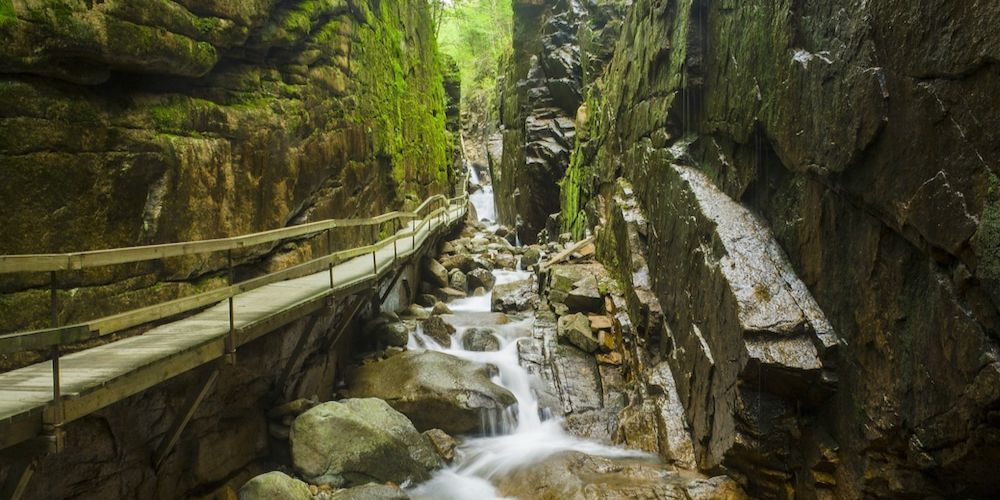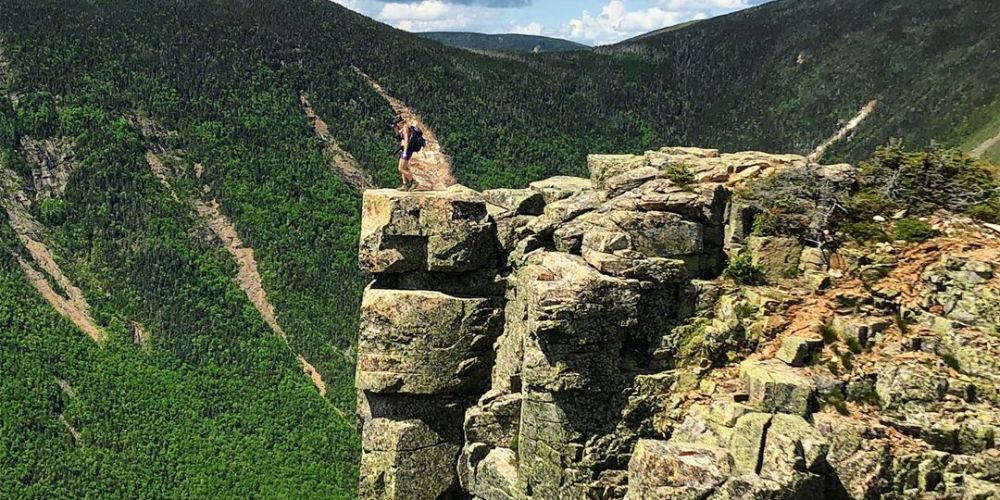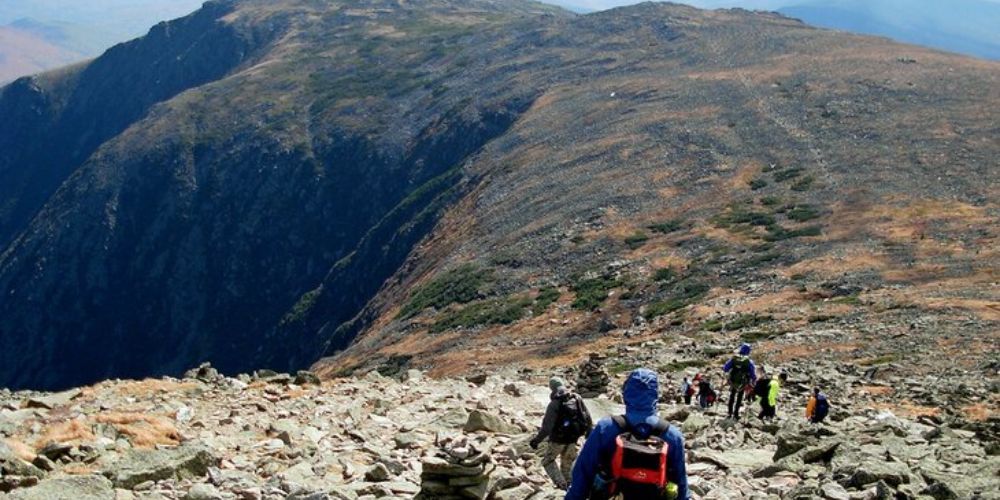Hiking in New Hampshire: Explore the Best Trails and Mountains
New Hampshire’s trails offer something special for every nature enthusiast, whether you’re an experienced hiker or just starting out. With its diverse landscapes ranging from dense hardwood forests to high alpine zones, you're bound to find a trail that matches your skill level. Picture yourself walking along a quiet path in Franconia Notch State Park, where only a few steps reveal stunning views that make each moment unforgettable.
However, these beautiful paths come with unique challenges such as rapidly changing weather and encounters with wildlife like moose and black bears. Our extensive research ensures you're prepared for these surprises, allowing you to focus on capturing breathtaking photos and enjoying your hike safely. So, lace up those boots as we explore what makes hiking in New Hampshire an adventure worth pursuing.
Some of the top hiking trails in New Hampshire include Mount Monadnock, Franconia Ridge Loop, and Mt. Washington via Tuckerman Ravine Trail. Each of these trails offers a unique and rewarding hiking experience with stunning views of the surrounding landscapes.

What to Expect When Hiking in New Hampshire
Hiking in New Hampshire promises an array of scenic wonders, from the tranquil beauty of lush forests to the rugged majesty of its mountains. The state boasts well-marked trails that cater to hikers of varying skill levels, offering something for everyone, whether it's an easy stroll or a challenging climb.
It's important to be mindful of the unpredictable weather, especially as you venture into higher elevations. New Hampshire's weather can change rapidly, and temperatures can drop significantly with altitude. Packing layers is essential to ensure comfort and safety throughout your journey.
Furthermore, encountering wildlife is a common occurrence while hiking in New Hampshire. Keep an eye out for iconic animals such as moose and black bears. While these encounters can be thrilling, it's crucial to be prepared and educated about how to react if you do come across these creatures. Being aware and knowing how to behave in their presence ensures a safe and enjoyable experience for both humans and wildlife.
In more remote areas, such as those found deep within the forests or atop the mountains, cell service can be limited or non-existent. This makes offline maps and emergency plans indispensable. Before embarking on your hike, it's vital to have a clear understanding of your route, carry a physical map, and inform someone about your plans. Being prepared for unforeseen circumstances is key to ensuring a smooth and secure adventure.
By anticipating these factors and preparing accordingly, you can maximize your enjoyment of the stunning natural landscapes that New Hampshire has to offer while staying safe throughout your hiking journey.
Having established what hikers should expect when exploring the breathtaking trails of New Hampshire, it's time to turn our attention to the diverse varieties of terrain and trail experiences available in this picturesque state.
Varieties of Terrain and Trails
One of the most enchanting aspects of hiking in New Hampshire is the wide range of terrains and trails available. From gentle beginner paths to more challenging ascents, there's something for everyone. Let's take a closer look at the diverse landscapes you can explore in this picturesque state.
In the southern part of New Hampshire, you'll find low-lying wetlands and hardwood forests that create a serene environment for leisurely strolls. These trails are perfect for those seeking a peaceful and relaxing walk while taking in the beauty of nature. The gentle slopes and well-maintained pathways make them suitable for families and beginners looking to ease into hiking.
Venturing further north, the landscape transforms into granite ledges and alpine zones, offering a stark contrast to the southern woodlands. Here, experienced hikers will find challenging ascents and rocky, exposed paths waiting to be conquered. The Presidential Range particularly stands out with its rugged terrain, providing a thrilling adventure for avid hikers seeking an adrenaline rush.
For those seeking moderate difficulty with stunning views, the Lakes Region boasts trails that wind through picturesque locales. Along these trails, hikers can enjoy serene views of the shimmering lakes while navigating moderate inclines and diverse terrain. It's an ideal setting for a rewarding hike that balances physical challenge with breathtaking scenery.
Quick Tip: Even though signage is usually reliable, it's always wise to carry a trail map just in case you need to navigate unmarked territory or want to explore lesser-known trails off the beaten path.
The diversity of terrains presents plenty of opportunities for hikers of all levels to immerse themselves in unique natural landscapes while enjoying various levels of challenge. But tread carefully, as each trail has its own secrets waiting to be discovered.
As we step beyond the varied trails into the heart of New Hampshire's natural wonders, we're set to embark on an exploration of the White Mountain National Forest.
Exploring the White Mountain National Forest
The White Mountain National Forest is an outdoor enthusiast's dream come true. With nearly 800,000 acres of land to explore, this natural wonderland is a hiker's paradise. Whether you're an avid mountaineer looking for a challenging ascent or a casual day-tripper seeking breathtaking views, this forest has something for everyone.
One of the crowning jewels of the White Mountain National Forest is the Kancamagus Highway. This scenic byway not only provides access to numerous trailheads but also treats visitors to awe-inspiring viewpoints. The foliage during autumn offers a picturesque spectacle, with vibrant colors painting the landscape as far as the eye can see.
The Appalachian Trail
For those seeking an epic hiking experience, the 120 miles of the Appalachian Trail within the forest provide ample opportunities for adventure. Known for its rugged beauty, this segment of the trail encompasses diverse terrain and stunning vistas, perfect for long-distance treks or shorter day hikes.
Mount Washington and Extreme Weather Conditions
Standing tall as the highest peak in the Northeast, Mount Washington holds an iconic place in outdoor enthusiasts' hearts. What sets it apart, however, is its reputation for extreme weather conditions. The summit is notorious for its strong winds and rapidly changing weather patterns, making proper preparation crucial for any hiker daring to scale its heights.
Important Tip: Always check the weather forecast before embarking on any hike in this area, and be sure to pack accordingly - even in summer months.
Permits and Parking Fees
Unlike some national parks and forests, day hikers in the White Mountain National Forest generally do not require permits. However, it's important to note that specific trails may have parking fees, especially during peak seasons. Being aware of these details beforehand can save time and ensure a smoother start to your hiking experience.
With its extensive trail network, stunning vistas, and diverse range of outdoor experiences, exploring the White Mountain National Forest promises unforgettable adventures that cater to hikers of all levels.
As we bid adieu to the remarkable White Mountain National Forest and all it has to offer, let's now venture into discovering another layer of fascination—the unique features nestled within the prestigious White Mountains.
Unique Features of the White Mountains
The White Mountains boast truly remarkable geological formations that are not commonplace. For instance, the imposing granite cliffs of Cannon Mountain stand tall and proud, inviting climbers to conquer their rugged faces.
And then there's Cathedral Ledge, a dramatic rock face cutting through the sky with an air of grandeur. Its sheer surface presents an exhilarating challenge to rock climbers, attracting adventurers from all over seeking triumph over nature's formidable creation. The diversity of terrain in these mountains creates a thrilling playground for outdoor enthusiasts longing for both excitement and natural beauty.
The treasures of the White Mountains extend beyond the rocks and cliffs, as these mountains are also home to alpine zones found above the treeline. Here, the landscape transforms into a wonderland adorned with stunning flora, including delicate and rare arctic-alpine plants that find refuge in this unique environment.
But what truly distinguishes these mountains is the hut system operated by the Appalachian Mountain Club. It's a feature that stands out not just in the region but across American hiking as a whole. These huts provide crucial shelter and amenities at high elevations, serving as vital lifelines for hikers undertaking rugged treks through remote areas.
The presence of these huts offers a level of convenience and safety uncommon in other hiking destinations, allowing hikers to travel lighter and explore more freely without having to carry extensive camping gear up into the White Mountains. The comfort provided by these huts allows hikers to fully immerse themselves in the natural wonders around them without being weighed down by heavy loads—all while adding an element of camaraderie as fellow adventurers come together at these mountain sanctuaries.
From awe-inspiring geological formations to rare alpine flora and a hut system that fosters safety and community, the White Mountains have no shortage of distinctive characteristics that set them apart as a premiere destination for hiking enthusiasts.

Popular Hiking Trails
New Hampshire boasts an incredible array of hiking trails that cater to a wide range of abilities and preferences. Whether you're seeking challenging elevation gains, breathtaking panoramic views, or family-friendly adventures, there's a trail for everyone in the Granite State.
The Franconia Ridge Loop is a must-do for avid hikers looking for a challenge. Stretching over 8.6 miles, this trail offers not just physical exertion, but also rewards with expansive views of the Pemigewasset Wilderness. The trail's rugged terrain and elevation gains make it suitable for experienced hikers seeking an immersive adventure.
On the other end of the spectrum is Mount Monadnock, renowned as one of the most popularly climbed mountains globally. This iconic 4-5 hour hike offers stunning 360-degree views from its bald summit, providing a truly enriching experience for hikers seeking breathtaking vistas without an overly strenuous trek.
For families or those seeking a more leisurely stroll, The Lost River Gorge and Boulder Caves provides an enchanting escape. Wooden walkways lead visitors through awe-inspiring caves, creating an exploration almost akin to a magical journey for children and adults alike.
This hike is not just about traversing nature's wonders but also about making unforgettable memories with loved ones. It's a great way to introduce younger generations to the joys of hiking and nature appreciation.
Lastly, Arethusa Falls offers a moderate 2.8-mile hike leading to one of New Hampshire's tallest waterfalls. Ideal for photographers and nature enthusiasts, this trail combines natural beauty with accessibility, giving hikers an opportunity to witness an impressive natural marvel while enjoying a fulfilling outdoor experience.
These diverse trails epitomize the rich tapestry of hiking experiences awaiting adventurers in New Hampshire—each offering something unique and appealing to different kinds of hikers.
As you lace up your boots and prepare for your next adventure, let's explore essential tips and tricks for getting ready for your hiking escapade.

Preparing for Your Hiking Trip
Preparation is crucial for a successful and enjoyable hiking trip. Every hike is different, so having the right items can make all the difference in both safety and enjoyment.
Gear Up
When gearing up for a hike, it's imperative to have the right equipment and clothing. Wearing waterproof hiking boots will keep your feet dry and provide better grip on challenging terrains, while breathable clothing will help regulate body temperature during strenuous climbs. Comfortable attire plays a pivotal role in the hiking experience. Additionally, essential items like a first aid kit, multi-tool, whistle, and headlamp are not only useful in unexpected situations but also contribute to overall safety.
Food and Water
Hydration is paramount during any outdoor activity, especially when hiking. Carrying enough water to stay adequately hydrated, particularly on longer treks, is crucial. Along with water, packing high-energy snacks like trail mix or energy bars is highly recommended to provide quick bursts of energy without weighing you down with heavy food items.
Being well-fueled helps maintain energy levels and alertness, allowing you to fully appreciate the beauty of your surroundings without distractions from hunger or fatigue, vital for maintaining endurance and strength during the hike.
Navigation Tools
Navigating unfamiliar trails demands reliable tools, whether it be a physical trail map or a GPS device. A dependable map or GPS will guide you along the trail and prevent getting lost - a situation that can add unnecessary stress or even danger to your outing. In this digital age, utilizing GPS-enabled apps like AllTrails can enhance your navigational abilities even further.
Check Weather
New Hampshire's weather can be unpredictable, changing rapidly from sunshine to showers within minutes. Therefore, consulting the forecast before setting off on your hike is essential. Staying informed about weather conditions allows you to adequately prepare for sudden changes by packing appropriate layers or rain gear.
Armed with suitable gear and preparedness for potential changes in weather conditions, you're ready to set off on a safe and fulfilling hiking adventure through New Hampshire's picturesque landscapes.
Safety Guidelines for Hikers
When considering safety guidelines for hikers, it's not just about rules and regulations; it's about being smart and preparing ourselves for whatever might come our way. First things first, it's all about communication. Always inform someone about your hiking plans, including the trails you plan to take and your expected return time. It's crucial to have someone aware of your whereabouts, just in case something unexpected happens. This simple act can make a huge difference in the unlikely event that you run into trouble or get lost along the trail. So, make sure you leave clear details before hitting the trails.
Stay on Marked Trails
Venturing off-trail sounds adventurous, but it can be dangerous – both to you and the environment. By sticking to marked paths, you not only ensure your safety but also contribute to the preservation of the natural surroundings. Marked trails are usually cleared and maintained by park authorities to guarantee safe passage through terrains and, importantly, protect the ecosystem from unnecessary damage. So, let's do our part in preserving these natural havens by staying on designated trails.
Wildlife Awareness
As you venture into the great outdoors, it's important to respect the wildlife that calls these areas home. Keep a safe distance from wildlife encounters - as exciting as it may seem, getting too close can be risky for both parties involved. For instance, if you encounter a bear during your hike, try to appear large and make noise - this helps prevent surprise encounters and minimizes potential threats. And never feed wildlife; doing so might encourage dangerous interactions and disrupt their natural behavior.
Emergency Preparedness
Preparation is key when it comes to emergency situations on the trail. Always carry a basic first aid kit and know how to use each item within it. You'd be surprised how much comfort a small first aid kit can provide when faced with minor injuries or discomforts. And while we rely heavily on our phones nowadays, having a small portable charger can be an absolute lifesaver in emergencies. This simple addition can ensure that help is just a phone call away if needed.
Safety guidelines aren't meant to hinder your outdoor experience; they are designed to enhance it by keeping you safe and prepared for anything that may come your way while traversing New Hampshire's beautiful trails and mountains.
Author: William Flaiz
Check out these other activities in New Hampshire
Check out activities in these nearby states: Maine , Vermont , Massachusetts
